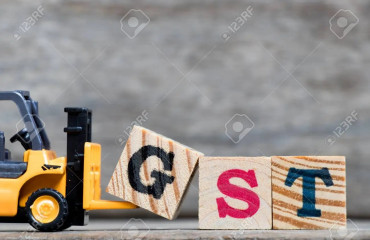
The Indian government, through the Ministry of Finance, has undertaken substantial reforms to its tax assessment and recovery system. Contrary to the specific query regarding a potential 5% GST on food delivery applications like Zomato and Swiggy, which was clarified as incorrect, the focus has been on enhancing efficiency and transparency across the board. The reforms are not a response to fundamental structural issues, but rather a proactive strategy to modernize and streamline tax administration. Key initiatives include the widespread digitalization of tax processes, the introduction of faceless assessments and appeals, and the implementation of electronic tracking systems. The Goods and Services Tax Network (GSTN) platform plays a crucial role in real-time monitoring of GST filings, mitigating fraudulent claims. Customs reforms, such as the risk management system, electronic duty payments, and automated refunds, have also contributed to improved efficiency. To address tax evasion, “Project Anveshan” utilizes advanced technologies like facial recognition systems and E-way bill data to identify high-risk GSTINs. Additionally, the Demand Facilitation Centre (DFC) in Mysuru aids taxpayers in resolving outstanding tax demands, providing guidance and support through the resolution process. These measures collectively aim to strengthen revenue collection and curb revenue leakage.
The Indian government, through the Ministry of Finance, has undertaken substantial reforms to its tax assessment and recovery system. Contrary to the specific query regarding a potential 5% GST on food delivery applications like Zomato and Swiggy, which was clarified as incorrect, the focus has been on enhancing efficiency and transparency across the board. The reforms are not a response to fundamental structural issues, but rather a proactive strategy to modernize and streamline tax administration. Key initiatives include the widespread digitalization of tax processes, the introduction of faceless assessments and appeals, and the implementation of electronic tracking systems. The Goods and Services Tax Network (GSTN) platform plays a crucial role in real-time monitoring of GST filings, mitigating fraudulent claims. Customs reforms, such as the risk management system, electronic duty payments, and automated refunds, have also contributed to improved efficiency. To address tax evasion, "Project Anveshan" utilizes advanced technologies like facial recognition systems and E-way bill data to identify high-risk GSTINs. Additionally, the Demand Facilitation Centre (DFC) in Mysuru aids taxpayers in resolving outstanding tax demands, providing guidance and support through the resolution process. These measures collectively aim to strengthen revenue collection and curb revenue leakage.
Furthermore, the government is leveraging technology-driven solutions to enhance tax compliance and enforcement. Current systems employ machine learning algorithms, behavioral anomaly detection models, and rule-based interdictions for risk assessment. Future developments include advanced AI models that integrate natural language processing, computer vision, and data analytics. By consolidating data from various internal and external sources, the Income Tax Department (ITD) can identify potential tax evasion cases and promote voluntary compliance. Technology-driven solutions are also integral to the upcoming Integrated E-filing and CPC (IEC) 3.0 project, which aims to improve the e-filing experience and provide numerous benefits to taxpayers, ultimately fostering better compliance and enforcement. The government's strategic use of technology and digital platforms is aimed at creating a more efficient, transparent, and compliant tax system.
GOVERNMENT OF INDIA
MINISTRY OF FINANCE
DEPARTMENT OF REVENUE
RAJYA SABHA
UNSTARRED QUESTION NO-3437
ANSWERED ON – 01.04.2025
STRUCTURAL REFORMS IN TAX ASSESSMENT AND RECOVERY
3437. SHRI GOLLA BABURAO:
Will the Minister of FINANCEbe pleased to state:-
(a) whether it is a fact that Government is planning to impose 5 per cent GST without input credit on food delivery apps like Zomato, Swiggy etc.; and
(b) if so, the details of quantum of amount of burden on consumers annually?
(c) whether any technology-driven solutions are being considered to enhance tax compliance and enforcement?
ANSWER
MINISTER OF STATE IN THE MINISTRY OF FINANCE
(SHRI PANKAJ CHAUDHARY)
(a) & (b): No. The Indian tax assessment and recovery system, while effective, has undergone significant reforms in recent years to enhance efficiency and accountability. These reforms are not necessarily due to inherent structural inefficiencies but are part of a proactive strategy to modernize, simplify, and increase transparency. Key reform measures include the digitalization of tax processes, faceless assessments and appeals, the use of electronic tracking systems etc. Additionally, the introduction of the Goods and Services Tax Network (GSTN) platform for GST filings ensures real time monitoring and minimizes fraudulent claims. Various customs reforms and digital initiatives, such as the risk management system, electronic duty payments, electronic bonds and bank guarantees, and automated refunds, have further contributed to improving the efficiency and accountability of tax administration. To safeguard revenue and target tax evaders, the "Project Anveshan" (Analytics, Verification, Shortlisting of Anomalies) was initiated, using techniques like facial recognition systems (FRS), E-way bill data, and other tools to identify GSTINs with a high propensity for fraudulent activity. These measures have proven effective, either directly increasing revenue collection or plugging revenue leakage. Regarding tax recovery, the Demand Facilitation Centre (DFC) was established in Mysuru in June 2022 to assist taxpayers in resolving outstanding tax demands, particularly those requiring rectification or eligible for reduction. The DFC serves as a facilitation point, guiding taxpayers through the resolution process.
(c): A comprehensive range of technology-driven solutions has been implemented to improve tax compliance. Current systems include machine learning algorithms, behavioral anomaly detection models, and rule-based interdictions for risk assessment. Future advancements being developed include advanced AI models integrating natural language processing, computer vision, and data analytics such as predictive, fraud, and geospatial analytics. By combining data from various internal and external sources, the Income Tax Department (ITD) has been able to identify potential cases of tax evasion and promote voluntary compliance. Technology-driven solutions are also being considered for the upcoming Integrated E-filing and CPC (IEC) 3.0 project, which aims to enhance the e-filing experience and provide numerous benefits to taxpayers, ensuring better compliance and enforcement.
